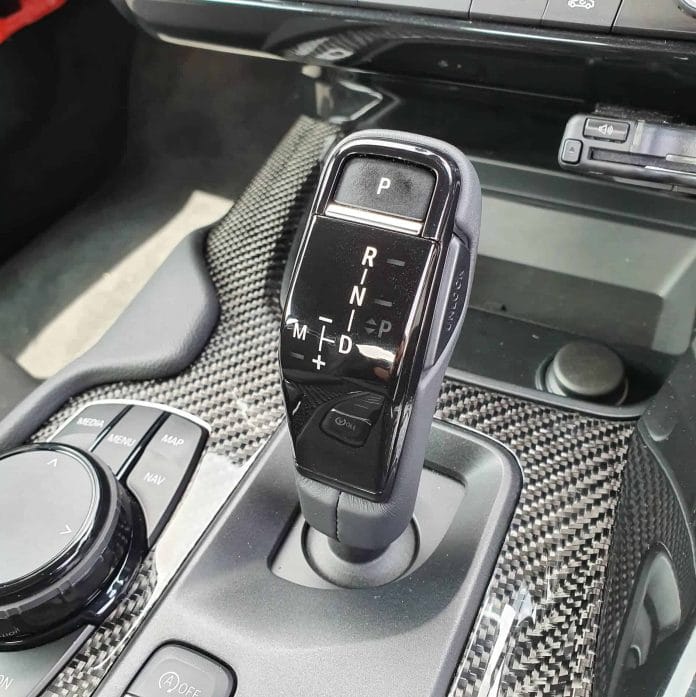“I think we need a Supra story again,” excitedly declares Toyota Motor Corporation (TMC) president Akio Toyoda in a video proffered by the Japanese automaker.
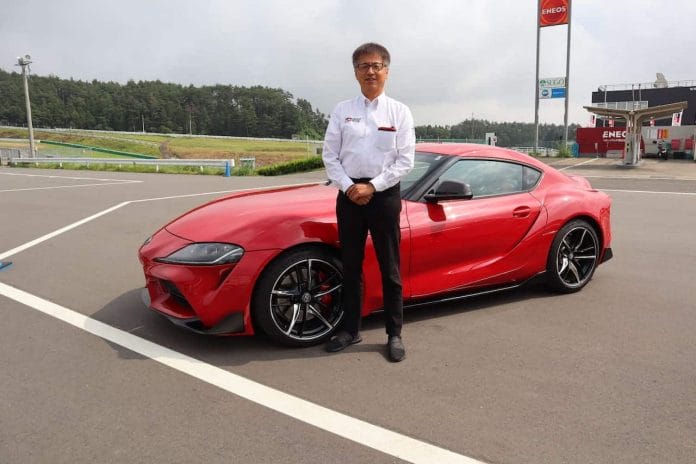
Tetsuya Tada poses with his baby.
Regional motoring media are gathered this overcast day at the Sportsland Sugo racetrack in Japan’s Miyagi Prefecture, an hour by bus from our hotel in Sendai.
The executive is, by all accounts, heavily invested emotionally in the development and release of the 2020 GR Supra – a car that arrives all of 17 years after the final release of its immediate predecessor, the Mark 4, A80.
In its long absence, the iconic Supra had been sort of a unicorn – a much-desired nameplate for a Toyota reaching mythical status. And perhaps because of this extended stay away from the limelight, expectations have run very high for the A90, or the fifth-generation Supra. Legions of loyalists had been waiting.
This also speaks of the intrinsic heightened performance attributed to the model lineage which has, through its iterations, been known for progressively upping the ante. TMC technical adviser David Lovett notes how the previous Supra was no slouch during its time (1993-2002). Powered by Toyota’s 2JZ-GTE 3.0-liter, the turbocharged, DOHC inline-sixer corralled 320 horses and dished out 427Nm – punching out a standstill-to-60mph time of 4.6 seconds. Most significantly, the Mark 4 held a world record for a 70-to-0mph stopping distance of 45 meters – a record that stood for more than 15 years. It wasn’t a stretch, even then, to consider the car as “pushing (towards) world-class sportscar models.” The point is that this is the kind of ability being asked of the car.

Debuting globally in Detroit last January, the new Supra earns the prefix GR, which stands for Gazoo Racing. This brand embodies Akio Toyoda’s (and now, Toyota’s) motorsports aspirations. Made in the Magna Steyr plant in Graz, Austria, the GR Supra, as you must know by now, shares a heart with the BMW Z4. The two vehicles also have a common transmission (a ZF eight-speed automatic), dampers, and steering rack.
There are two engine options available: the four-cylinder 2.0-liter B488B2001 blurting out 255hp and 400Nm, and the simply brutish 3.0-liter inline-six B58B30M1 which supplies a wasabi-strong 335hp and 500Nm.
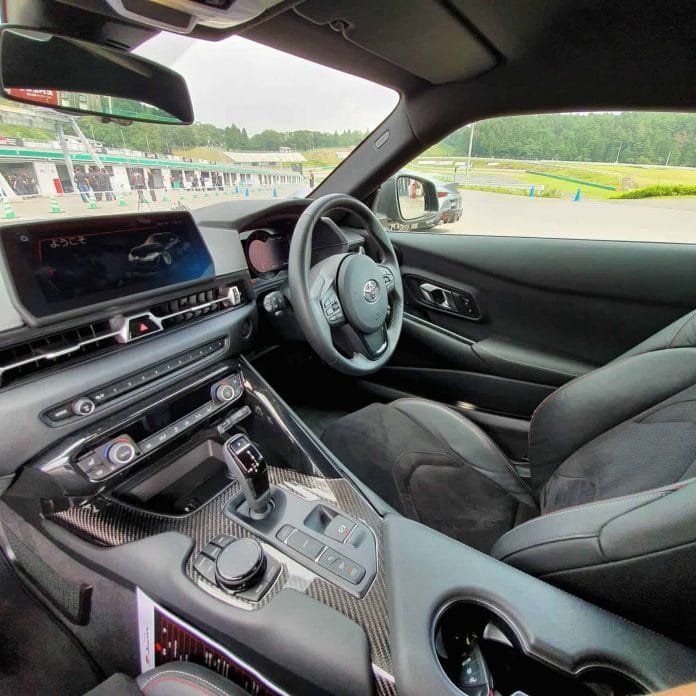
Thankfully, the Philippine market gets the more potent power plant. The four-banger is actually meant for territories which more heavily tax powerful engines – which would probably put the six-cylinder variant out of easy reach.
At Sportsland Sugo (virtually annexed as “Supraland Sugo” for the day), we have the honor to meet and talk with the chief engineer of the GR Supra, the affable Tetsuya Tada, who doesn’t shirk from talking at length on how he one day found himself traveling to Munich to talk with BMW executives about a collaborating for an engine. But that’s another matter altogether, and we’ll talk about that in an article to come.
The first order of business is to convey how the car comports itself. After all, we weren’t flown to Japan by Toyota Motor Philippines Corporation (TMPC) just to do some static shots. Time to jump in the driver’s seat.
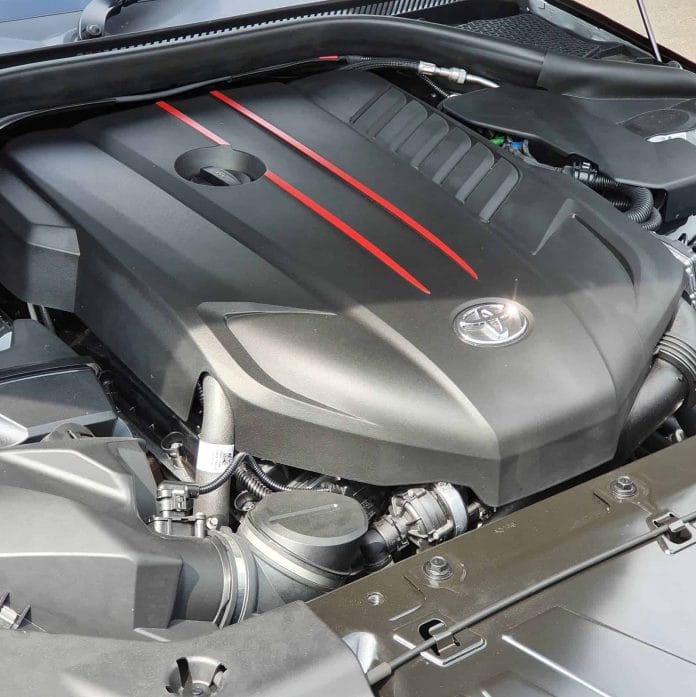
a wasabi-strong 335hp and 500Nm.
A Supra drive
The first leg of our stint with the GR Supra drive takes from Sugo to the Kamafusa Dam in Kawasaki. The scenic, undulating route is an appropriate way to acquaint ourselves with the car. Sticking to the speed limit and ascertaining lower-rev poise is, of course, one way to assess the everyday drivability of the car.
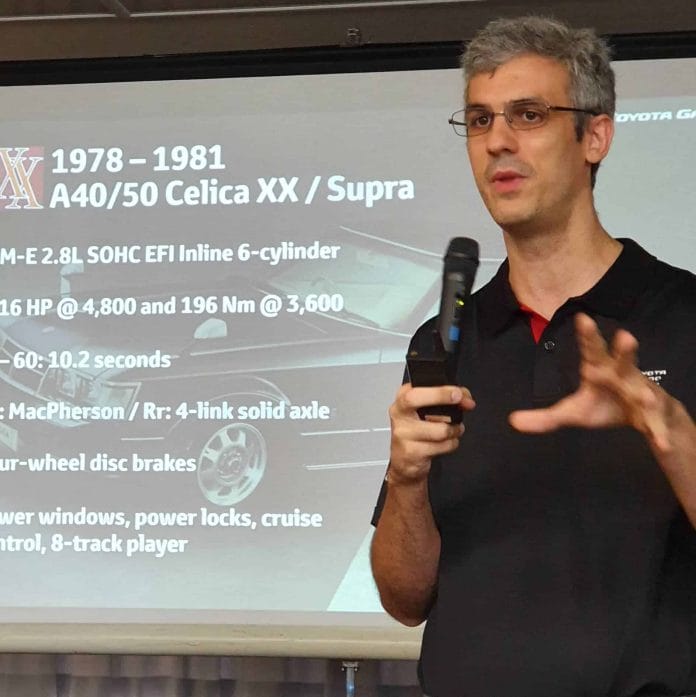
about the different Supra generations.
I am happy to report that the torque satisfyingly comes low on the rev range. Lovett had indeed noted earlier how one can realize maximum torque at 1,500rpm – a value helped along by the Supra’s 11:1 compression ratio – allowing the twin-scroll turbo to spool up even faster.
My instructor Yoshi Kataoka asks me to engage the Sport mode. Yes, we all know what that button usually entails. The Supra becomes sprightly and is eager to rev up. “It’s an additional measure to enhance driving pleasure,” the TMC adviser had said. Indeed, I can hardly keep myself from smiling every time I step on the accelerator and then release it. The car lets out hearty “pops and burbles,” reaffirming what the Supra is really all about – heightened performance. That pleasing sound, helped along by the GR Supra’s sound system, isn’t artificial at all because the car’s advanced system actually doesn’t go into “fuel cut” when Sport is engaged, hence the real backfire.
Pushing it
On the outdoor, serpentine closed course of the Sportsland Sugo, we get a chance to stretch the legs of the GR Supra a bit more. When taking corners at speed, the vehicle reveals excellent rigidity and poise – facilitated by a low center of gravity and 50/50 weight distribution ratio.
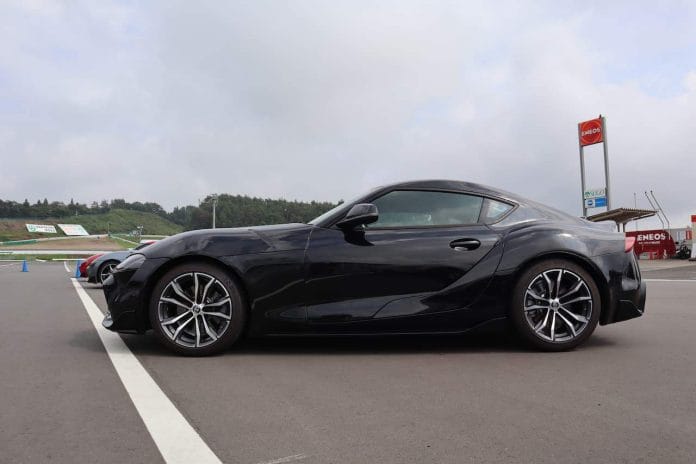
Inevitably, on the Fédération Internationale de l’Automobile (FIA)-accredited track of Sugo, the GR Supra appears and feels most at home. It is a track weapon, after all. Toyota also wants to highlight its straight-line ability, and I venture to floor the accelerator on the back straight. In a few heartbeats, the vehicle speeds up to 190kph before Kimi, the instructor beside me this time, signals me to slow down for the Horseback Corner. Bummer.
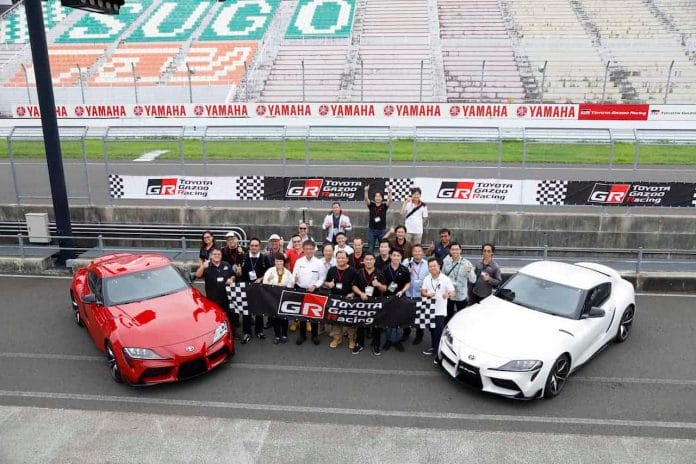
with Tada-san and other Toyota officials.
But there’s still plenty of fun to be had. The GR Supra shines most around corners. It has a rear that won’t quit – keeping firmly planted on terra firma even when much is asked of its front wheels.
The GR Supra stretches 4,379mm, is 1,854mm wide, and towers 1,294mm. By comparison, the Toyota 86 is 4,240mm long, 1,775mm wide, and 1,320mm high. But despite being larger than 86, the GR Supra’s wheelbase is shorter by 100mm. In tandem with a wide track width, it achieves what Tada-san calls a “golden ratio” of 1.55 (computed by dividing the wheelbase with the track width). The lower the number, the more the car adheres to a go-kart experience as far as easy cornering goes. Still, one cannot go too far down this number as straight-line stability suffers. For comparison, the previous-generation Supra had a 1.67 value.
The front-mid engine configuration in the new Supra was achieved by moving the engine as far backward as it could to be entirely behind the front axle. Alternative materials were used to save on weight such as aluminum (for the hood, front side members, suspension towers, and doors), and resin for the trunk lid. There’s no vestigial back seat unlike in the 86, so you just have to pop the aforementioned trunk to secure your knickknacks.
But, hey, let’s get real. You’re not going to take a Supra out on a grocery run, right?
Just like Toyoda-san said, we need another GR Supra story.


